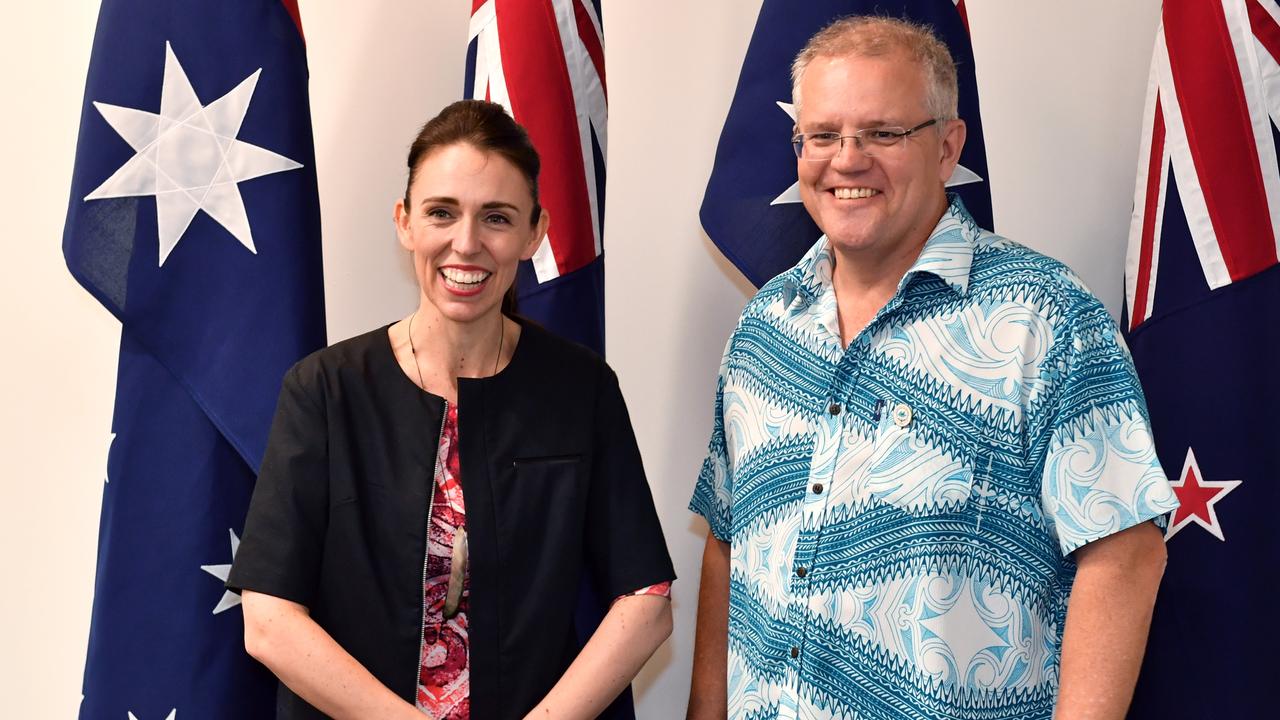In defence of cartooning, and Mark Knight’s Serena Williams cartoon

Unfortunately it needs to be said time and time again, racism in any form should be challenged and not tolerated.
People are people regardless of race and all should be treated equally.
That has not always been the case with what has happened in Australia.
In the late 1800s it was fashionable to denigrate people from Asia.
Phil May’s 1886 cartoon, published in The Bulletin of a Mongolian octopus attacking white Australians has often been used to depict attitudes of that time. In our first national parliament in 1901 just about every politician there wanted to be given credit for the White Australia Policy.
It took decades to eliminate that policy from our legislation and it is going to take many more decades to eliminate its legacy from our society.
It was not only Asians who were the subject of racist cartoons.
Aboriginal people were often denigrated in cartoons during the last two centuries. It is without question a national shame how these images were drawn, published and laughed at.
The nation has matured — a little since then — but more needs to be done to eliminate the remnants of racism, which still exist in many forms.
However there are times when sections of the media get carried away and invent reasons to attack what they think is racism. Public opinion, swelled by social media, becomes so intense anyone disagreeing is attacked and called a racist too.
One such example is the cartoon Mark Knight drew last year of Serena Williams throwing a tantrum at the US Tennis Open.
Everybody knows the cartoon is racist, because everybody says it is.
Well not everybody.
The Australian Press Council has ruled it is not racist.
Mark Knight said: “The cartoon was just about Serena on the day having a tantrum. That’s basically it.”
It was not the first time he has drawn her in a cartoon. “I love to draw Serena, she is a cartoonist’s dream,” he said recently.
“Those cartoons in the past were positive in nature, commenting on her power and strength.” Who could disagree? She is without doubt one of the all time great tennis players to have played the game.
Writing in The Conversation, Angelina Hurley, saw the cartoon differently to Knight, saying: “Yet from the perspective of peoples of colour, it was obvious that the image was not simply about Serena having a tantrum. Not only was there misrepresentation of Serena in the cartoon but also of Naomi Osaka who is of Japanese and Haitian descent but was depicted as white a woman with blonde hair.”
She is not alone, as many people have expressed the same opinion.
However those assumptions about the cartoon are not based on fact, but opinion. For starters, Osaka was not depicted as a white woman.

While the image of Williams does have some shading, her skin in the cartoon has the same colour base as the Osaka image.
It is easy to prove. Anyone with the Photoshop program on their computer can test the colour of the skin of both players.
However, few will as the majority of people commenting on the cartoon have already made up their minds: “Naomi has been white washed”.
There is a second problem with the criticism of the Osaka image.
She has blond hair in the drawing. True she does.
However, if anybody bothers to look, she did have a large part of her ponytail blonded when playing in the US Open.
Anyone in any doubt can use their computer to look up photos of her in the game. Again few will, as they have decided: “Naomi has been white washed”.
“Nobody looks nice throwing a tantrum”
As for the claim of a “misrepresentation of Serena” in the cartoon, that too is hard to establish.
She was drawn as a woman of colour. She is a woman of colour. Not to draw her that way would be racist.
True, she did not look nice in the drawing, but she did not look nice when throwing her tantrum. Nobody ever does look nice when throwing a tantrum.
While Knight has drawn Williams more than once, it is only this one, which has caused controversy.
When presented to the Herald Sun, nobody thought there was a problem with the cartoon. Not one reader of the paper objected to it on the day it was published either.
To argue the cartoon was racist is to imply everyone who looked at it before it was published and everyone who saw it in the paper is racist or indifferent to racism.
An argument which would be impossible to sustain. Especially after the eruption which followed the next day.
Knight says it was only after the cartoon was published on Twitter that evening, is when people started to make derogatory comments about it.
“That is when the proverbial hit the fan,” he said recently. “The cartoon landed in the US where racial tensions between African-Americans and the conservative white population have been elevated under the Trump regime.”
Also, the cartoon arrived in an environment where there was a lot of background noise going on relating to the Williams tantrum.
Some people thought Williams was right to challenge US Tennis Open umpire Carlos Ramos’ actions.

He docked her a point and eventually a game for her behaviour. During the game she said many disparaging things about Ramos including calling him a cheat.
At one time she said: “I have a daughter and I stand for what’s right for her and I never cheated. You owe me an apology.”
The facts prove she was in the wrong. When called into the dispute, tournament director Brian Earley and Women’s Tennis Association’s supervisor Donna Kelso supported Ramos. Even her coach Patrick Mouratoglou, later admitted to ESPN he “was 100 per cent coaching”.
None of these facts have stopped people saying she was hard done by because she is a “black woman and mother” who was treated differently from what a white male player would have been.
It is an argument still doing the rounds in the name of racism or sexism or both.
There are some who say Knight is guilty of racism because there were some race-based cartoons published in America about 100 years ago. Hurley quotes Sisonke Msimang on the ABC Q&A program last September saying: “I also reject the notion that ignorance can presume innocence and that ongoing ignorance and especially denial is a vehicle for purposeful offence”.
The reality of this claim is it is unsupportable. The original artist — obviously drawing racist cartoons — has nothing to do with Knight.
Nobody can be guilty of being a racist because of what somebody (who they knew about) did a long time ago. We are all responsible for our own actions.
Some people claimed Knight had not cartooned on male players who had behaved badly, accusing him of sexism.
They ignored the cartoons he had drawn on the subject. They also ignore the cartoons he drew in defence of Adam Goodes who was treated appallingly in 2013 and 2014 by racist crowds at AFL games. But what has that got to do with the topic when people have made up their minds?
Then there were the people who considered it was perfectly OK to threaten Knight’s children and wife with violence because of the cartoon.
So serious was the intimidation taken security guards stood sentry around Knight’s home for over a week. It is odd how some people can think racism can be conquered by committing violence in the name of eliminating racism.

Artists have been drawing cartoons for as long as people have been able to draw.
In these drawings there are often caricatures of people with exaggerated features. John Howard was drawn little (sometimes with a rat’s tail).
Julia Gillard got a pointed nose and a big bum.
Tony Abbott nearly always gets big ears and budgie smugglers.
Peter Dutton is often depicted with a potato as his head.
There are times when some drawings are racist or sexist or both.
Larry Pickering was infamous for drawing some indefensible sexist cartoons about Gillard. However, in the Knight cartoon, Williams got treated as someone throwing a tantrum. Nothing more.
Given the cartoon was drawn back in September last year, and it is still generating comment, it is reasonable to expect the controversy surrounding it will be ongoing for some time.
Fair enough. We are all entitled to our opinions.
But it would be nice if some facts were introduced to the conversation.
— Lindsay Foyle has been involved in the media for almost 60 years. While mostly involved in magazine design, he has been drawing cartoons professionally since 1975. He was deputy editor of The Bulletin in the 1980s and deputy editor of Australian Business Monthly in the early 1990s. He worked on The Australian from 1996 to 2009 as a journalist and cartoonist. He is a past president the Australian Cartoonists’ Association and has been active in the Media and Entertainment Arts Alliance for over four decades. He has also known Mark Knight since the 1980s.


